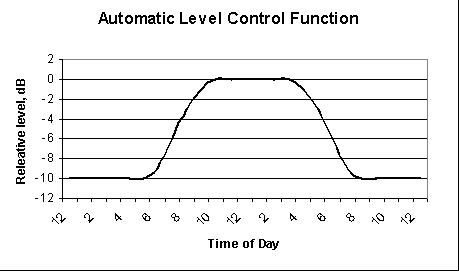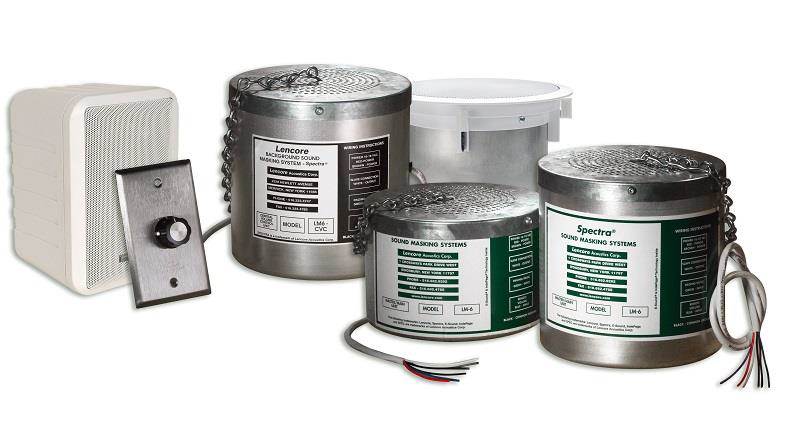When faced with an acoustical problem such as a noisy office, oftentimes the root cause is overlooked. Modern office design and architecture places a premium on open floor plans and collaborative workspaces which lack the ubiquitous partition walls, carpets, and even the acoustical ceiling tiles that we’ve all become accustomed to seeing. As a result, the ambient noise level within the space can become a serious hindrance to those trying to work and focus. Compounding things, many such spaces also utilize reclaimed materials such as glass and wood which can add to the problem by creating reverb. A sound masking system is a solution that can effectively alleviate acoustical problems without compromising the aesthetics of a space, but first, you must understand the different systems on the marketplace, and more broadly, how sound masking works.
Understand How Sound Masking Works
Sound masking works by subtly and uniformly raising the ambient background sound in a targeted area by uniformly filling it with a clean, non-intrusive sound. A good analog is to think of a large auditorium with two people standing at opposite ends. They could talk to each other using a normal speaking volume and have little to no trouble hearing and understanding each other. Now imagine the auditorium has fifty people in it, while the space may be louder, it would be much more difficult for those two original occupants to hear and understand each other. This same principle applies when thinking of an office.
The background noise of a quiet office sits at around 40dBA (Decibels), while normal speaking volume is around 50dBA. With voices being so much louder in relation to the ambient noise, speech privacy becomes almost impossible as anybody within earshot can hear and understand each other’s conversations, making it difficult to focus. Sound masking in this case would raise the ambient volume to around 47-48dBA, bringing the background level more in line with speech. This results in reduced intelligibility, meaning others conversations blend into the ambient noise rather than being a distraction.
Remember: background noise of a quiet office is 40 dBA, so setting the open office sound masking at 47-48 dBA greatly decreases distractions from nearby conversations and noise sources.
Sound Masking System Design
Generally the speakers are installed in the plenum, the space above the ceiling and below the roof, where they remain out of sight. They fill the plenum with sound which then filters down through the acoustical ceiling tile, providing a uniform and broad coverage. For spaces that forego ceiling tiles and opt for a more exposed style, there are also decorative speakers that can be installed on the ceiling, walls, or even desktops and match the décor and color of the space.
For mixed use spaces, certain systems such as Lencore’s i-Net, have the ability to designate zones which can be controlled independently from each other. Open office areas can be set to turn on and off at certain times of day or raise and lower the level of masking automatically depending on busy times, whereas private offices can be set to a separate zone which remains at the same level at all times. The speakers used for masking can also be utilized to provide music and paging, all controlled from a central location.
Secret to Sound Masking – Dynamic Range
The reason sound masking is such an effective way to improve speech privacy and reduce distractions is Dynamic Range. This is the difference between the quietest sound in an area, versus the loudest sound. We mentioned earlier that many offices hover around 40 dBA, although this is highly dependent on the air conditioning and other mechanical and computer equipment. If someone shouts out to their colleague at 60 dB, then this is a 20 dB jump, which would cause most employees in the space to at least look up, if not become startled.
If instead the background level was set at 50 dBA with a sound masking system, then you will only have a 10 dBA jump when the colleague shouts (from 50 dBA to 60 dBA). This dynamic range is half of what it was initially, resulting in very few people in the office being distracted by it, and many of the not hearing it at all!
When designing sound masking systems, our acoustic consultants focus on minimizing dynamic range wherever possible so that open offices are not distracted with unwanted noise.

Types of Sound Masking – Classic vs Networked
There are two primary types of sound masking systems. These include:
- Classic Sound Masking systems: they simply run power to can speakers and are individually tuned. They may all be linked, or daisy-chained, together so that a single control may adjust the volume on all of them.
- Networked Sound Masking systems: these are controlled by a network control panel, and may be automatically set to adjust throughout the day (see Figure 1).
When selecting a type of sound masking system, consider the long-term use of the space, and if it may need to be configured again in the future. Re-programming classic systems is much more expensive, while networked systems may be re-configured digitally. The initial cost of a classic system is often less (up to about 20,000 square feet), but maintenance over its life-cycle may be much higher if office changes are made.
Conclusion: What You Need to Know About Sound Masking
At the end of the day, consider using sound masking when you have an open office, or have general speech privacy issues between adjacent spaces. Many facilities personnel and architects attempt to use acoustic panels and other solutions that do not effectively address the issue.
Also, consider the long-term use of your space, and what type of functionality you need. If there is likely to be reconfiguration of the office space, or if you prefer an automatic control of your system, consider the Networked Sound Masking system.

